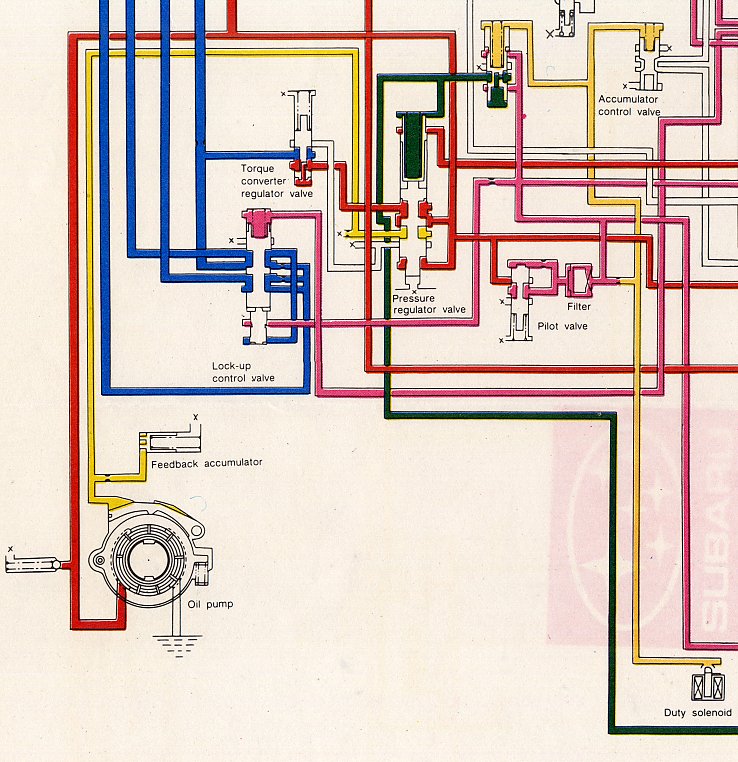The oil pressures that act in the Auto box are a number of different pressures that are all derived from the oil pump pressure that is called the Line Pressure. The engine drives the oil pump, and its output varies with the engine speed. To prevent the pressure from becoming too high at high engine speeds, the Pressure Regulator valve controls the line pressure.
This valve is not just a pressure bleed off type. It is a valve that controls the pumps output, by moving the pumps cam ring to change the volume output, from full output, to no output. As the pump pressure builds up, the Regulator valve sends more pressure to the cam ring to reduce the pumps output. In this way the maximum line pressure is held to about 215 psi, but as the engine speed varies, so does the line pressure, reducing to about 70 psi at idle. The Regulator valve also adjusts for the sudden variations in Line pressure caused by the application of clutches, bands and valve action.
As the Line pressure varies with engine speed, so does the engines torque, so it is not a problem to have the pressure low with low engine speeds. As the engine speed and torque increases, the pressure increases. If the engine is at part throttle and at high speed, there is no need for a high Line pressure as the torque is low. To save power the Line pressure is adjusted to suit the throttle position. This is performed by the Duty solenoid A.
The A solenoid is a controllable valve that can vary a Pilot pressure applied to the Regulator valve, to alter the Line pressure, under the control of The Transmission Control Unit. The TCU controls the pressure for oil temp, throttle position and gear shifting. The TCU turns the Throttle Position Sensors 0 to 12V signal, into a 12V Duty Cycle signal that varies the current sent to the Solenoid, in line with the throttle position. When full throttle is used, the solenoid stays as an open drain, and the pressure is held high. As the throttle is closed the Throttle Duty Cycle current, is increased to reduce the solenoids drain on the Pilot pressure that acts on the Regulator Pressure Modifier valve and Line pressure is reduced.

The way the TCU controls the Line Pressure for oil temp or gear shifting, is done by the A solenoid valve, through a different wire that connects directly to the A solenoid, without going through the Dropping resistor. As the Throttle Position Duty Cycle is a 12V signal and the A Solenoids resistance is only 3 ohms, the Dropping resistor is used to drop the current to a level that the solenoid can use. The other signal from the TCU is a 5V Duty Cycle that is fed in to the line, between the dropping resistor and the solenoid. This forms a voltage divider circuit, so that both signals can be sent to the Solenoid at the same time. So that when the throttle is wide full open and the line pressure is high, the TCU can send a signal through the other line to reduce the line pressure while the box changes gear, or for a number of other conditions.
This is what the circuit looks like with both TCU signals feed to the solenoid.

So while the Throttle pressure is controlled by the throttle pedal position. The Line Pressure is modified by the TCU to suit the operating conditions that apply at the time.
Harvey.
